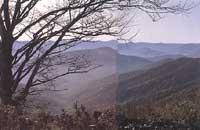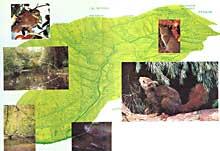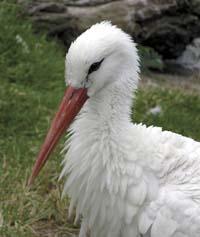For me and for nature?
2009/12/01 Lakar Iraizoz, Oihane - Elhuyar Zientzia Iturria: Elhuyar aldizkaria
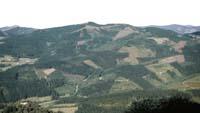
This does not mean that there is no relationship between nature conservation and private property. For example, 40% of the Places of Community Importance of the Natura 2000 Network of Gipuzkoa are private.
"You have to look at its value from the point of view of nature and biodiversity to designate a land as a natural space to protect, and not if it is public or private property," says Iñaki Azkarate, environmental technician of the City of Errenteria. And the rules to follow are the same if a protected plot is public or private.
These rules sometimes delimit what owners can do on their land. And in general, the owners, Fernando Otazua, technical director of the Association of Forest Owners of Gipuzkoa, are not very satisfied with these limits: "In short, they benefit less economically than they could get in another situation and are cautious about this situation." In addition, he says that "the owners do not think that declaring a land as a natural space benefits them. They do not see as a benefit the increase of tourism, the increase of biodiversity, etc. ".
The Administration knows this and sometimes encourages owners in exchange for limitations of use. According to information provided by Ismael Mondragón, head of the Forest and Habitat Management Service of the Provincial Council of Gipuzkoa, 119 files have been processed in Gipuzkoa for the grant of aid since 1987. These grants have meant the protection of 168 ha, for which 540,975 euros have been allocated.
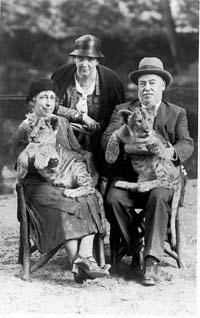
The owners pay with joy. As Otazua has pointed out, "if the people have decided that it is worth taking certain measures on the ground of a specific person, the most correct thing is that the people give a certain remuneration to that owner."
The Administration uses various means to protect the private lands it considers of interest from the point of view of biodiversity. However, they do not always manage to put an end to the initiatives launched. Azkarate mentions such a case: In Errenteria, near the Natural Park of Aiako Harria, there is a small oak grove of great interest, with several mature specimens. "The owner of the plot obtained the authorization of the Provincial Council for the demolition of the oak and when it was known our department, the Department of Environment, decided to act," he adds.
They met the owner and studied the purchase of the land by the City Council. However, the proposal of the Department of Environment did not go ahead in the City Hall and did not buy it. "Right now we don't know what will happen to this oak tree. Despite having the permission of the Provincial Council, they have not yet done so," said Azkarate.
Preservation with first and last names
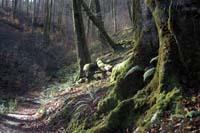
An example is the Lordship of Bertiz. It is one of the largest forests in the Basque Country in the best ecological state: a mature forest of two thousand hectares, whose shade has developed a very rich ecosystem.
The chief responsible for this situation is the last private owner Bertiz had, Mr. Pedro Ziga. Pedro Ziga and his wife, Dorotea Fernández, bought the Señorío de Bértiz in 1898. The couple gave the lordship its current appearance, and did not want it to be altered when he died. To do this, they left written in the will that they were to be ceded to the Diputación de Navarra and that they would remain in their possession, provided that it met the requirement of not being able to modify the characteristics of the lordship.
Under this condition it passed into the hands of the Diputación de Navarra in 1949. In 1984 it was declared Natural Park, the first in Euskal Herria, and since then, through its management plans, the actions to be carried out, the measures to be adopted and the guidelines so that the Bertiz forest does not lose its value are defined.
Private as a complement to the public

In fact, all protected natural spaces require a management plan. "Sometimes, however, these actions do not cover all the needs of a specific natural space," said Azkarate. And sometimes these needs require extraordinary actions in private settings.
This is the case of the Urdaibai Biosphere Reserve and specifically the Amunategi Stream. The Amunategi River is the residence of the European mink, where the largest population of the Iberian forest frog is located, as well as various plants to protect, etc. As for its location in Urdaibai, the management of Amunategi corresponds to the Department of Environment, Territorial Planning, Agriculture and Fisheries of the Basque Government.
The Urdaibai management plan shows that Amunategi is among the conservation priorities. However, as the Urdaibai Foundation points out, "there is no planned action plan to improve the ecological state of this stream."
The Urdaibai Foundation is a private non-profit organization that aims to contribute to the conservation and management of nature. In the stream Amunategi is intended to restore the native vegetation.
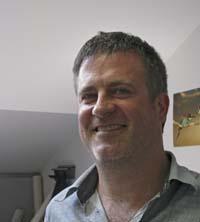
However, many of the land they want to restore has a private owner and cannot enter them in any way. The tool used for the work is the so-called Custody of the Territory, an initiative in which a private non-profit organization carries out a management in favor of the conservation of nature, culture or landscape in foreign lands. For this, of course, they link some agreement with the owners of the land. The Urdaibai Foundation is already working on about 100 hectares through this management system throughout Hego Euskal Herria.
"Specifically in Amunategi we already have 17 plots in our charge. For this we had to deal with seven owners," says Maider Olondo of the Urdaibai Foundation. In total, more than 20 hectares of land and approximately 750 linear meters of river. The Amunategi basin, however, has an area of 300 hectares.
The restoration of the land is not a slow task, as it is necessary to remove the trees, treat the soil and plant new plants. And, in addition to work, Olondo says they need "a huge fortune." The Foundation's partners put money, but that's not enough. To date they have received grants from public institutions (Basque Government and Busturia City Council), other foundations (Nature and Biodiversity Foundations), the board of the Urdaibai Biosphere Reserve and a private company (Torraspapel).
Dealing with the owners
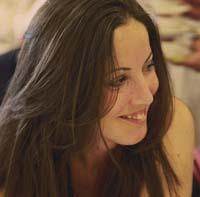
Work and money are not just to work on land. "The deal with land owners is very difficult here," said Olondo. In most cases they have had to make monetary deals with landlords. Some owners have donated the money they would earn when cutting the trees.
However, they have also had owners who have not asked to redeem them. David Elexgaray has been one of them. He has yielded a couple of parcels to the Urdaibai Foundation. This decision was made because he knew, on the one hand, the importance of maintaining the biodiversity of Urdaibai and, on the other, the good results given by the conservation of the territory in much more widespread countries such as the United Kingdom.
However, the fact that many owners want to deposit money for money does not surprise Elexgaray. In his opinion, behind this attitude is the culture of the hamlet: "everything related to the hamlet must benefit. If the land has no meadows, the baserritarras have orchards or tree plantations. Its scheme does not include the transfer of land for the regeneration of the natural forest. It does not correspond to the tradition they know."
Azkarate, environmental technician of the City of Errenteria, seems normal that the owners adopt a position contrary to the beginning: "This opposite stance is not only manifested in the conservation of nature, but some citizens do not think it is good to take measures against tobacco, pedestrian streets or have to pay the OTA to park the car." But he considers that all are "public policies to be implemented."
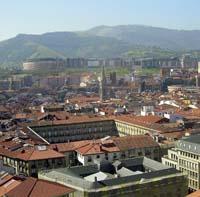
However, before seeking a change of attitude in the private sector, Azkarate believes that on public grounds there is something to do: "XXI. In the 19th century, many municipalities in Euskal Herria barely make money from forestry and logging; the main economic activities are related to trade or industry. In this situation the production of wood in communal lands is not necessary."
Currently, the coverage of natural forests in public lands is very limited. However, Azkarate believes that more and more indigenous forests will be introduced in public lands. "20% of Gipuzkoa is public and we want to take it to this situation. What to do with the remaining 80%? Well, we will talk when the time comes, but let's do a winning management in communal lands: we will restore biodiversity and natural habitats (oak, marojales, holm oaks, alisedas, beech, etc. )".

Gai honi buruzko eduki gehiago
Elhuyarrek garatutako teknologia




